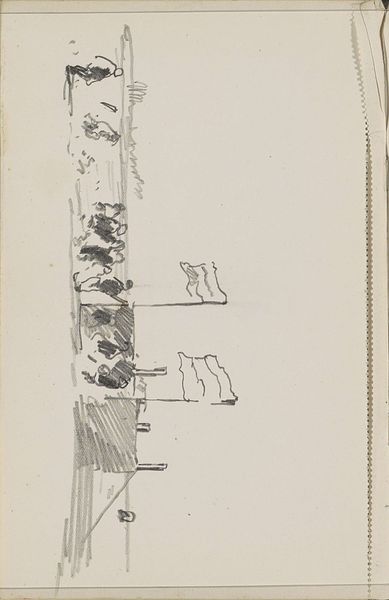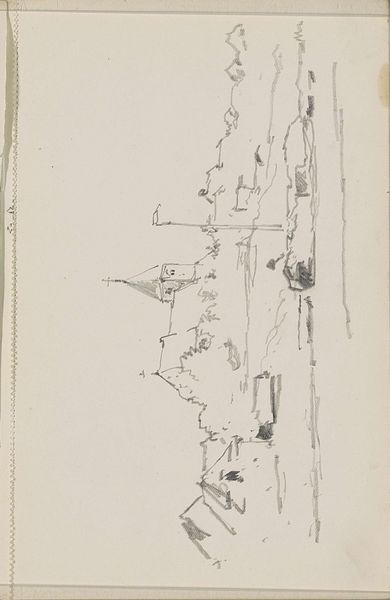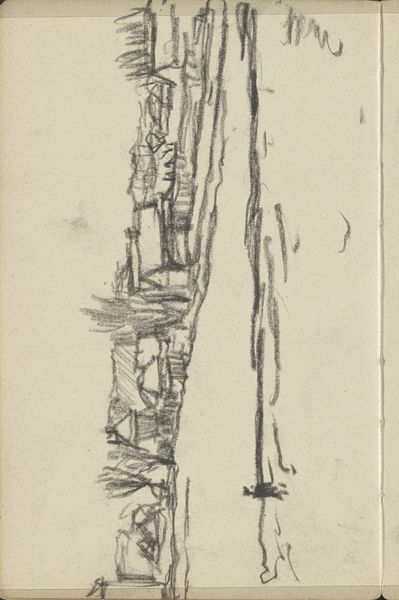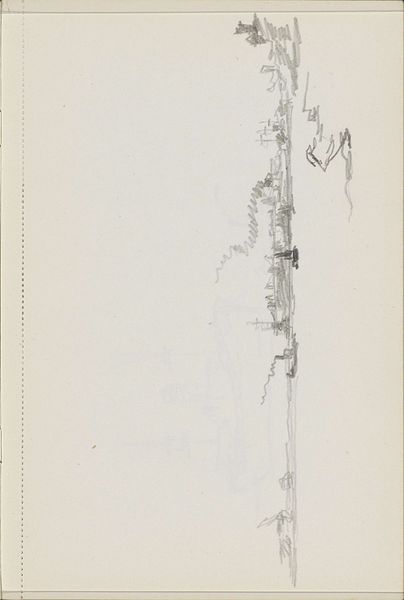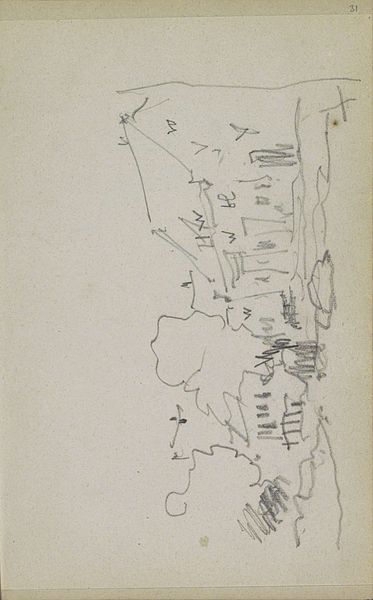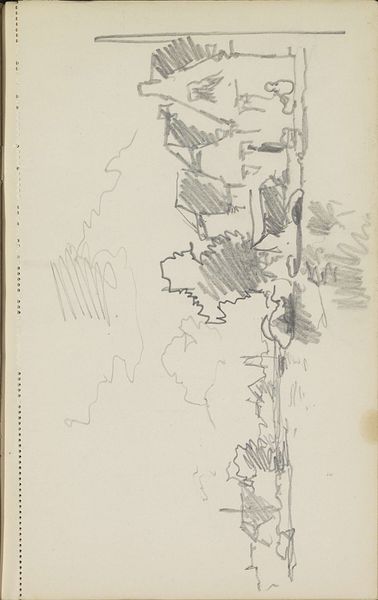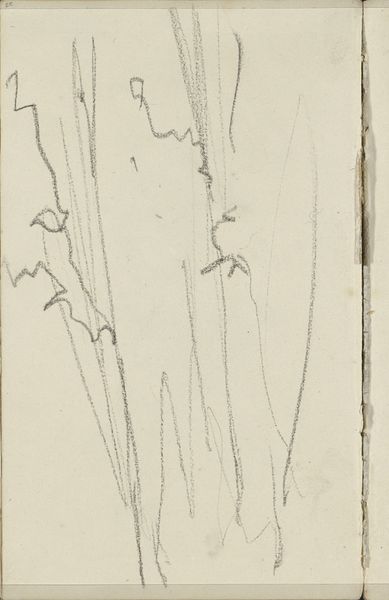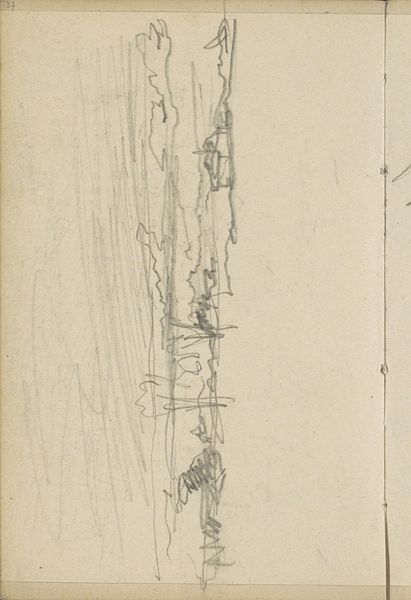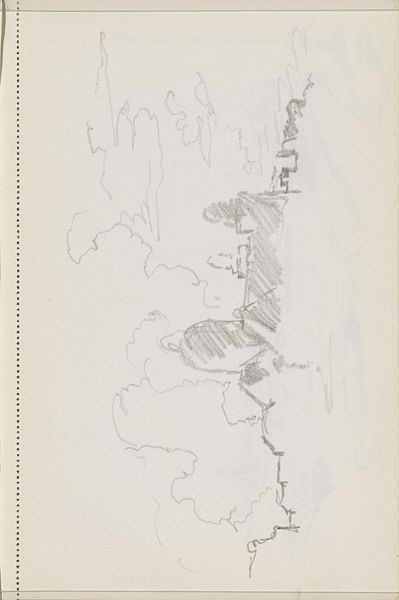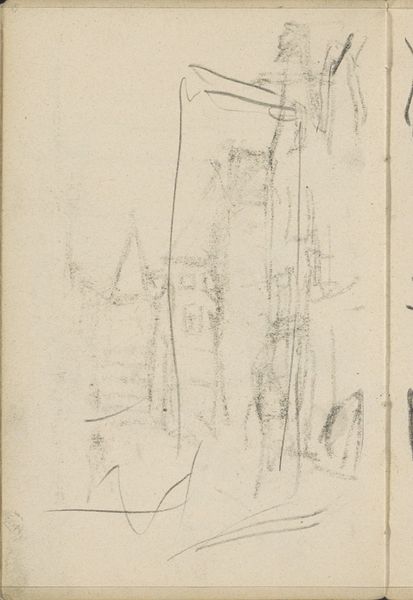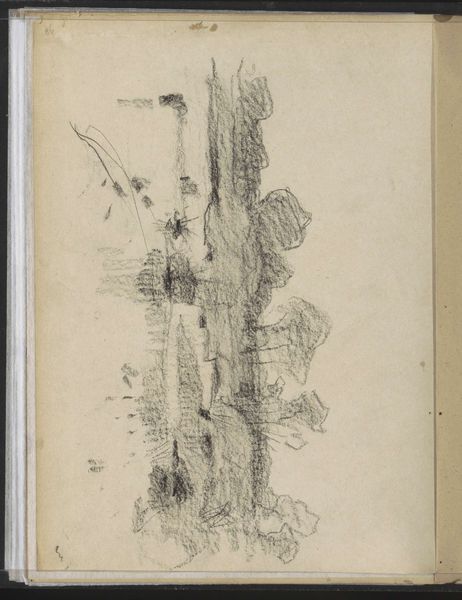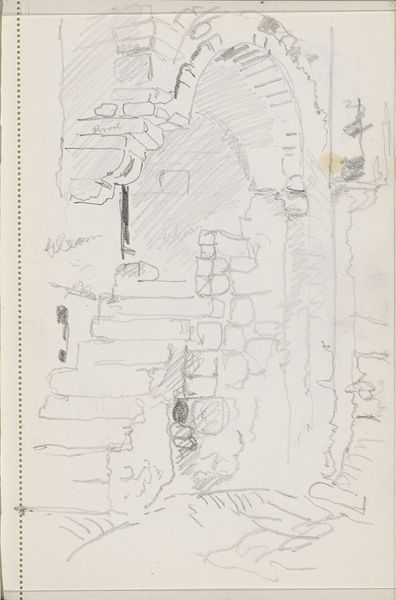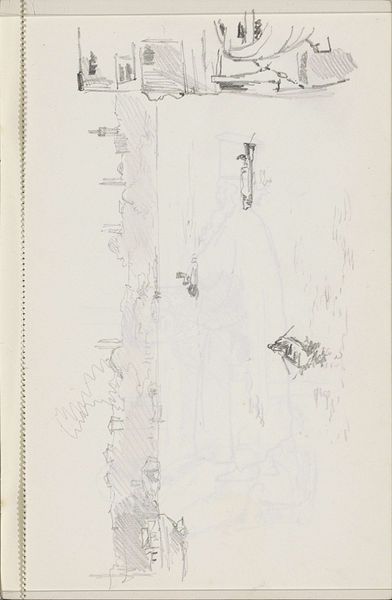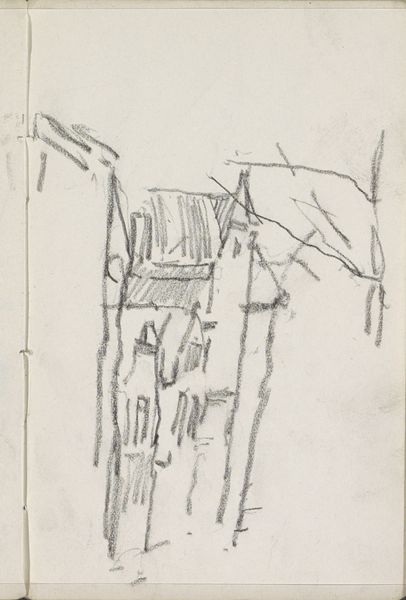
Copyright: Rijks Museum: Open Domain
Curator: This sketch is titled "Landscape with buildings, possibly by the water," created in 1917 by George Hendrik Breitner. It’s currently held in the Rijksmuseum collection. Editor: Wow, that is wispy. Like a half-remembered dream of a town square dissolving in the rain. I see the suggestion of forms, buildings, water, but everything feels… fleeting. Curator: Absolutely. Breitner was deeply interested in capturing the immediacy of urban life. This sketch, executed in pencil, offers a window into his process of observing and recording the world around him. The paper itself becomes part of the material's language. Editor: It’s definitely more about suggestion than representation. You get this feeling that he was quickly trying to capture a scene, or an impression of a place. What intrigues me is how incomplete it is. Like a ghost city. I wonder what kind of light inspired this… hazy? Bleak? Curator: Breitner’s impressionistic style lends itself to that feeling. The loose linework prioritizes atmosphere over detail. Consider also the availability of paper, and pencils during World War I; rationing surely impacted artistic production. We might also read it as a statement about the provisional nature of existence itself during that tumultuous time. Editor: Interesting! And it really does look like he was in a hurry. Were these sketches intended to be studies for larger paintings, or are they significant in their own right? Curator: It's thought many were kept as personal notes. In a way, they operate as generative pieces and an invitation to his artistic process; rather than considering this as merely "incomplete," we can explore how such rapid mark-making was as valued by Breitner. Think about it as pre-photography photography, quickly grabbing the zeitgeist. Editor: I like that – capturing the zeitgeist. Because, as raw as this is, there's something evocative about it. It feels authentic and unpretentious, a glimpse into the artist's mind. Almost like peeking into a private sketchbook... Curator: Precisely. Breitner's sketches offer invaluable insight into his artistic practice, his social context, and the way art is deeply entrenched into production, circulation, and labor of materials during a crucial time. Editor: So, ultimately it's about honoring the craft in progress. Well, thanks. This sketch makes me want to pick up a pencil and wander around the city… see what fades into view. Curator: Agreed, perhaps now our listeners do, too.
Comments
No comments
Be the first to comment and join the conversation on the ultimate creative platform.
